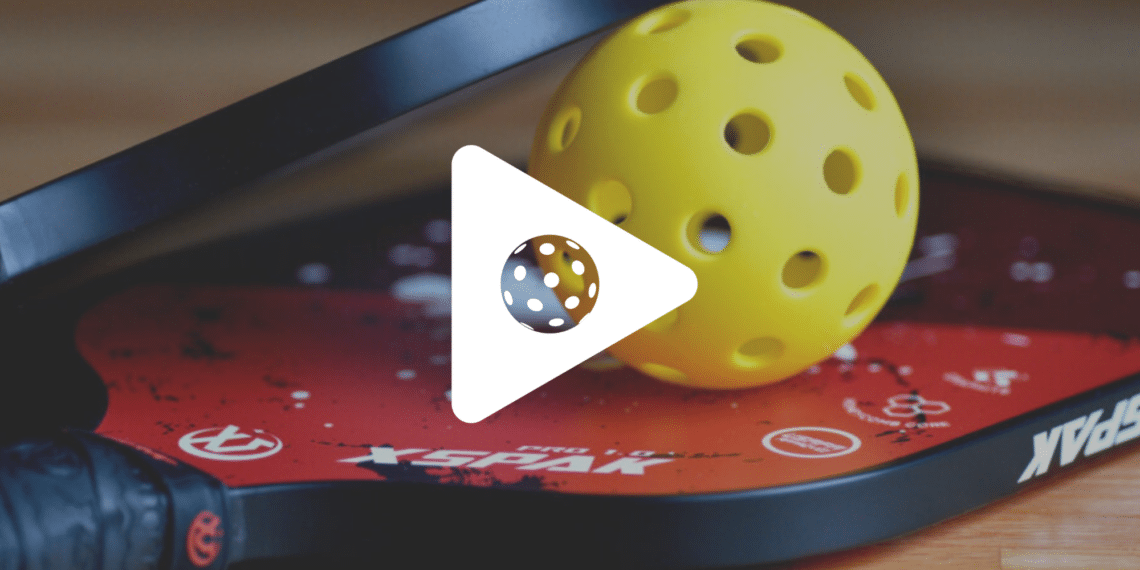Tips for meeting the demand for pickleball that’s taking the sports and fitness world by storm.
With pickleball gaining traction across the U.S., many health club operators are coming up with ways to capitalize on the growing interest. From offering lessons to new facility developments, many different strategies are being employed.
Recently, Frank Lawrence, the CEO of Little Rock Athletic Club; Wayne Morris, the CEO of Center Court Pickleball Club; Anthony Bright, a pickleball professional at The Houstonian; and Terry Lamperez, the head pickleball professional of Cross Gate Family Fitness, discussed during a digital roundtable how clubs can rise to meet the demand for the country’s fastest growing sport.
If you’re not currently offering pickleball, Morris suggested testing to determine the staying power of the sport at your club. Getting creative can grow interest and engagement while minimizing resources used. Using versatile spaces, such as a gymnasium, and temporary equipment can introduce members to pickleball and help gauge interest before you fully invest in the activity.
“Gymnasiums are a great place to start and see if you have a good pickleball community in your club,” said Morris. “Scheduling is really important, though. Announcing, scheduling, making sure people are aware and having staff on-site to make sure members understand what’s going on are key.”
If you determine pickleball is worth investing in, the next step is finding a permanent place to play. Either new courts must be created or old tennis courts should be repurposed. Bright explained how The Houstonian originally repurposed outdoor tennis courts into multiple pickleball courts. After receiving negative feedback from players, they had to pivot and change strategies.
“When we first put lines on our outdoor tennis courts for pickleball, we were able to fit four courts,” Bright said. “But it brings the courts a little too close. Members were not happy with that because they were right on top of each other. We ended up putting two pickleball courts per tennis court and we have moveable nets.”
The Houstonian has grown out of these temporary courts and recently broke ground on a $6.2 million sports complex with eight pickleball courts and other areas for socializing and spectating.
When building or redesigning spaces for pickleball, Morris noted common mistake facilities make is overlooking details that contribute to positive or negative member experience. Some he mentioned include paint color for indoor facilities, lighting, and space design including walkways and entrances to the courts.
“An immature pickleball player may be okay with walking across courts to get to other courts,” said Morris. “But as time goes on, those are the small things — where the entrance is, how do you get to your courts or walkways, the width of them — that come into play for a player’s experience. They’re important to keep in mind when designing your facility.”
Facility development for pickleball has been a big topic of discussion within the fitness industry.
Many of the roundtable participants’ facilities already have or are currently building areas specifically for pickleball. This isn’t easy, though. A big concern with developing any space for one specific area is the staying power of the activity it’s made for. Lawrence encouraged taking the risk, though, and emphasized the return on investment and possibilities are worth considering a development.
“Most of the multipurpose clubs I visit across the country were all racquetball clubs at one point in their past lives, but they’ve evolved,” said Lawrence. “I don’t think pickleball is a trend. There’s a tremendous infrastructure that’s being built out there from professional, large recreational and junior leagues all across the country. But, if pickleball ends up being a trend, you have a big space you can convert and do something else with.”
To negate this possibility, Lamperez shared strategies to further engagement and ensure members stay interested in the sport for longer. She emphasized the power of joining in on the fun. Showcasing the social and entertainment aspects of the sport can generate leads and further connections with current players. Simultaneously, it’s important to present yourself as the expert and remain cognizant of what players need.
“Be there on the court,” said Lamperez. “Laugh with players, be a smiling face and make it welcoming, but at the same time be serious. Offer your people great advice. Don’t jump in when you don’t need to. And treat them like they’re the most important thing to you because they are.”
Each club will have a different level of interest for pickleball. Listening to members’ needs and gauging their interest will be the best determiner of how to best meet the demand of the fastest growing sport in America.
Kylie is an assistant editor at Peake Media. She can be reached at kylie@peakemeida.com.






